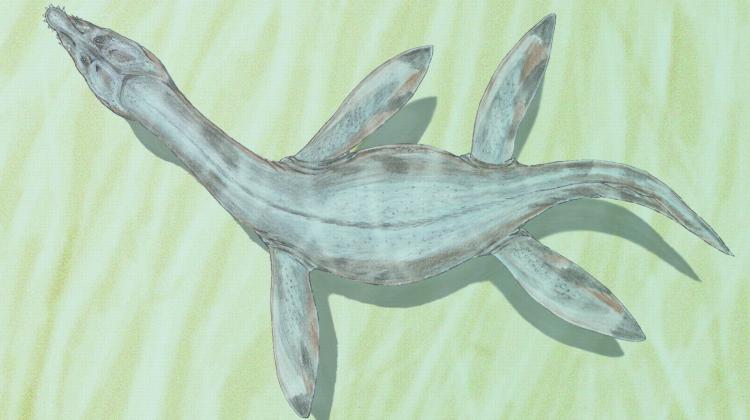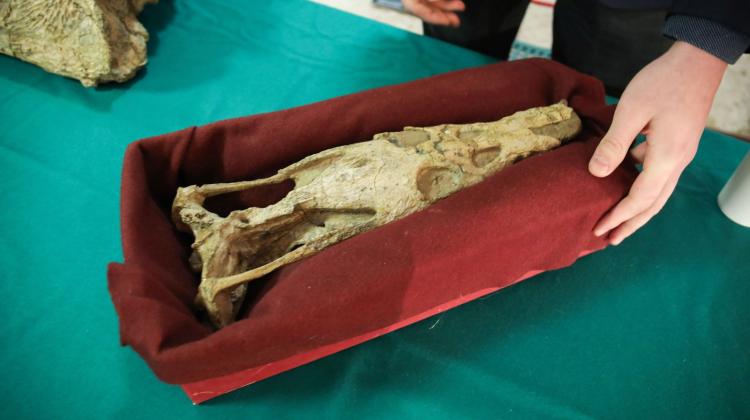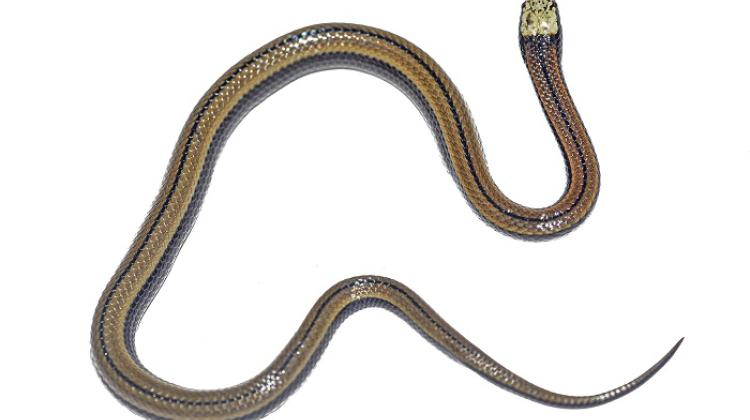Extinct reptile sheds light on aquatic evolution
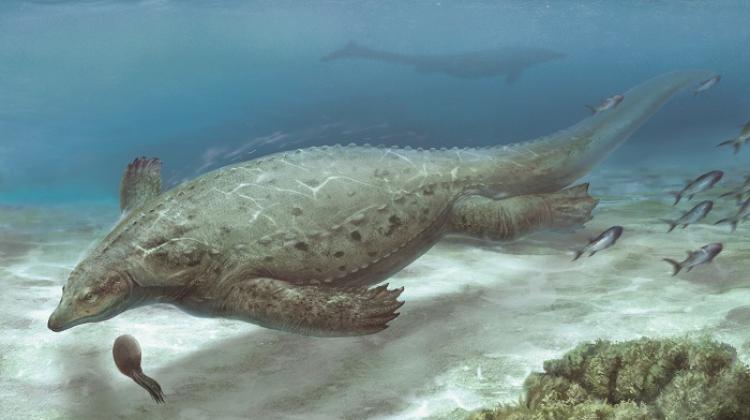 Reconstruction by Zhixin Han. Credit: Institute of Paleobiology PAS
Reconstruction by Zhixin Han. Credit: Institute of Paleobiology PAS
A Polish-Chinese scientific team has described a new marine reptile that lived about 250 million years ago in what is now China. The discovery sheds new light on the evolution of the aquatic lifestyle of extinct reptiles and confirms the close relationship of turtles with dinosaurs and their relatives.
The research project leader was Dr. Andrzej Wolniewicz from the Institute of Paleobiology of the Polish Academy of Sciences and the Hefei University of Technology in China. The paper was published in eLife (https://elifesciences.org/articles/83163).
The name of the newly described marine reptile is Prosaurosphargis yingzishanensis. It was 1.5 meters long and resembled a huge lizard. It had wide ribs and bone plates on its back, forming a kind of armour that most likely served as ballast and protected the animal against predators.
'This animal was a representative of an extinct group of marine reptiles called saurosphargids (Saurosphargidae), previously known from the Middle Triassic (247-237 million years ago) in Poland and southern China. The reptile we described lived in a shallow, hypersaline lagoon, which in the Early Triassic (about 250 million years ago) was located in what is now Hubei Province in southern China. Therefore, it is the oldest saurosphargid known to date,’ says Wolniewicz.
The discovery sheds new light on the evolution of the aquatic lifestyle of extinct reptiles.
To establish the relationship between saurosphargids and other groups of reptiles, Wolniewicz's team used phylogenetic methods (phylogenetics is a science that studies the developmental path of organisms). 'The family tree reconstructed on the basis of over 220 anatomical features indicates that saurosphargids were an early stage in the evolution of a larger group of marine reptiles known as sauropterygians (Sauropterygia), which also included the famous plesiosaurs,’ the palaeobiologist says.
Moreover, the analysis showed that the probable terrestrial ancestors of lizards had a well-developed skin armour. 'By acting as ballast, it enabled early representatives of this group to inhabit saltwater environments and scour the seabed in search of food. Over the course of evolution, sauropterygians became increasingly well adapted to life in the deep water. Some of them continued to develop their armour, although in the representatives best adapted to life in water, including plesiosaurs, the armour was eventually reduced,’ the scientist says.
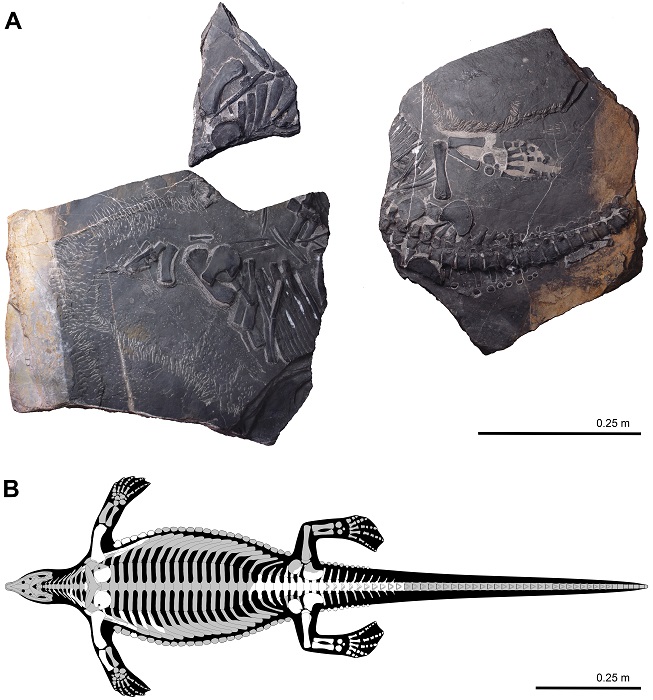
The results of the work also confirm the close relationship between archosaurs (crocodiles, dinosaurs, birds and their relatives) and turtles.
According to Wolniewicz, although this relationship was first proposed almost 30 years ago on the basis of genetic data, palaeontological data indicated that turtles were more closely related to lizards and snakes than to archosaurs.
'The relationship analysis conducted by my research team, based entirely on palaeontological (anatomical) data, indicates a close relationship between turtles and archosaurs. Moreover, it confirms the results of previous research, according to which archosaurs, turtles, as well as three groups of Mesozoic marine reptiles - ichthyosaurs (fish-lizards), sauropterygians and thalatosaurs - belonged to a huge group of reptiles called archelosaurs (Archelosauria), which achieved incredible evolutionary success,’ Wolniewicz says.
PAP - Science in Poland, Agnieszka Kliks-Pudlik
akp/ zan/ kap/
tr. RL
Przed dodaniem komentarza prosimy o zapoznanie z Regulaminem forum serwisu Nauka w Polsce.






